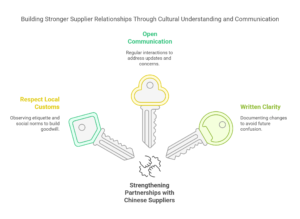Global patent portfolio management refers to the strategic management of a company’s patents across multiple jurisdictions and markets worldwide. It involves the identification, protection, and enforcement of intellectual property rights in order to maximize the value and competitive advantage of a company’s innovations. Managing a global patent portfolio is crucial for businesses operating in today’s globalized economy, as it allows them to protect their inventions, secure market exclusivity, and generate revenue through licensing and enforcement activities.
Table of Contents
ToggleKey Takeaways
- Global patent portfolio management is crucial for companies operating in multiple markets.
- A comprehensive patent strategy is necessary for protecting intellectual property in global markets.
- Identifying key markets and jurisdictions for patent filing requires careful consideration of local laws and regulations.
- Navigating international patent laws and regulations can be complex and requires expertise.
- Maximizing patent protection and enforcement in global markets requires a proactive approach and collaboration with international partners.
Understanding the Importance of a Global Patent Portfolio
Having a global patent portfolio offers numerous benefits for businesses. Firstly, it provides companies with a competitive advantage by granting them exclusive rights to their inventions in multiple markets. This exclusivity allows businesses to prevent competitors from copying or imitating their products or technologies, thereby maintaining their market share and profitability.
Furthermore, a global patent portfolio enables companies to generate additional revenue through licensing agreements. By licensing their patented technologies to other companies, businesses can earn royalties and expand their market reach without having to invest in manufacturing or distribution themselves.
On the other hand, not having a global patent portfolio can expose businesses to significant risks. Without proper patent protection, companies are vulnerable to infringement by competitors who may copy their inventions and bring similar products to market. This can result in lost sales, decreased market share, and damage to the company’s reputation. Additionally, without patents, businesses may find it difficult to attract investors or secure funding for research and development activities.
Developing a Comprehensive Patent Strategy for Global Markets
Developing a comprehensive patent strategy is essential for effectively managing a global patent portfolio. This strategy should align with the company’s overall business goals and objectives. The first step in developing a patent strategy is to identify the company’s core technologies and innovations that are worth protecting. This involves conducting an internal assessment of the company’s intellectual property assets and determining which inventions have the potential for commercial success.
Once the core technologies have been identified, the next step is to conduct a thorough analysis of the global market landscape. This includes identifying key markets and jurisdictions where the company’s products or technologies are likely to be sold or used. Factors to consider when selecting markets and jurisdictions include market size, potential for growth, competitive landscape, and legal and regulatory environment.
Identifying Key Markets and Jurisdictions for Patent Filing
When identifying key markets and jurisdictions for patent filing, businesses must consider several factors. Firstly, they need to assess the market potential for their products or technologies in each jurisdiction. This involves analyzing market size, growth rates, and demand for similar products or technologies.
Secondly, businesses must evaluate the legal and regulatory environment in each jurisdiction. This includes understanding the patent laws and regulations, as well as any specific requirements or procedures for filing and prosecuting patents. It is also important to consider the level of intellectual property protection and enforcement in each jurisdiction.
In addition to these factors, conducting a patent landscape analysis can provide valuable insights into the competitive landscape and existing patent rights in each jurisdiction. This analysis helps businesses identify potential competitors, assess the strength of their patents, and identify any potential infringement risks.
Navigating the Complexities of International Patent Laws and Regulations
Navigating international patent laws and regulations can be challenging due to the differences in legal systems, procedures, and requirements across jurisdictions. Each country has its own patent laws and regulations that govern the filing, prosecution, and enforcement of patents.
One of the main challenges is understanding the different patentability criteria in each jurisdiction. While some countries have similar criteria to grant patents, others may have stricter requirements or different standards for patentability. This means that an invention that is considered patentable in one country may not meet the criteria for patentability in another.
Another challenge is managing the timelines and deadlines associated with international patent filings. Each jurisdiction has its own deadlines for filing patent applications, responding to office actions, and paying maintenance fees. Failure to meet these deadlines can result in the loss of patent rights.
To navigate these complexities, businesses often seek the assistance of patent attorneys or agents who specialize in international patent law. These professionals have the knowledge and expertise to guide businesses through the patent process in different jurisdictions and ensure compliance with local laws and regulations.
Maximizing Patent Protection and Enforcement in Global Markets

To maximize patent protection and enforcement in global markets, businesses need to implement effective strategies. Firstly, it is important to regularly monitor the market for potential infringement of patented technologies. This can be done through market research, monitoring competitor activities, and utilizing technology tools that track patent filings and publications.
If infringement is detected, businesses should take prompt action to enforce their patent rights. This may involve sending cease and desist letters to infringers, initiating legal proceedings, or negotiating licensing agreements. It is crucial to work with experienced intellectual property attorneys who can provide guidance on the best course of action based on the specific circumstances.
In addition to enforcement activities, businesses should also consider proactive measures to protect their patents. This includes implementing internal processes to ensure that employees are aware of the company’s intellectual property rights and are trained on how to identify and protect inventions. It may also involve implementing confidentiality agreements or trade secret protection measures for inventions that are not yet patented.
Managing Patent Costs and Budgets Across Multiple Jurisdictions
Managing patent costs across multiple jurisdictions can be a complex task for businesses. Filing and prosecuting patents in different countries can be expensive, especially when considering translation fees, attorney fees, and maintenance fees.
To manage patent costs effectively, businesses should develop a budget specifically for their global patent portfolio. This budget should take into account the costs associated with filing, prosecuting, maintaining, and enforcing patents in different jurisdictions.
One strategy for managing costs is to prioritize markets and jurisdictions based on their importance to the business. This involves assessing the potential return on investment for each jurisdiction and focusing resources on those that offer the greatest market potential.
Another strategy is to leverage cost-saving mechanisms such as the Patent Cooperation Treaty (PCT) or regional patent systems like the European Patent Convention (EPC). These mechanisms allow businesses to file a single patent application that covers multiple jurisdictions, thereby reducing translation and filing fees.
Leveraging Technology and Automation for Efficient Patent Management
Technology and automation can play a crucial role in efficient patent management. There are various software tools and platforms available that can streamline and automate patent-related processes, such as docketing, document management, and deadline tracking.
Using technology for patent management offers several benefits. Firstly, it improves efficiency by reducing manual tasks and streamlining workflows. This allows businesses to save time and resources, enabling them to focus on more strategic activities.
Secondly, technology tools provide better visibility and control over the patent portfolio. Businesses can easily access and analyze their patent data, track deadlines, and generate reports. This helps in making informed decisions about patent strategy and resource allocation.
Lastly, technology enables collaboration and communication among team members involved in patent management. It allows for real-time collaboration, document sharing, and task assignment, regardless of geographical location. This is particularly beneficial for businesses with global operations or distributed teams.
Collaborating with International Partners and Stakeholders for Patent Success
Collaboration with international partners and stakeholders is crucial for the success of a global patent portfolio. This includes collaborating with foreign law firms or agents who have expertise in local patent laws and regulations. These partners can provide valuable insights and guidance on filing strategies, prosecution procedures, and enforcement activities in their respective jurisdictions.
Furthermore, businesses should consider collaborating with industry associations or organizations that focus on intellectual property rights. These associations often provide resources, training programs, and networking opportunities that can help businesses stay updated on the latest developments in patent law and connect with potential partners or investors.
Collaboration with research institutions, universities, or other companies can also be beneficial for patent success. By partnering with these entities, businesses can access additional resources, expertise, and funding for research and development activities. This can lead to the creation of new inventions and technologies that can be patented and commercialized.
Measuring and Analyzing the Performance of a Global Patent Portfolio
Measuring and analyzing the performance of a global patent portfolio is essential for making informed decisions about patent strategy and resource allocation. There are several metrics that businesses can use to assess the performance of their patents, including the number of patents granted, the number of patents in force, the number of licensing agreements or revenue generated from patents, and the number of successful enforcement actions.
Analyzing these metrics can provide insights into the strength and value of the patent portfolio. For example, a high number of granted patents may indicate a strong innovation pipeline and a successful patent prosecution strategy. On the other hand, a low number of licensing agreements or revenue generated from patents may indicate a need to reassess the commercial potential of the patented technologies.
Based on these performance metrics, businesses can adjust their patent strategy as needed. This may involve reallocating resources to focus on more promising technologies or markets, revising filing strategies to improve grant rates, or exploring new licensing or enforcement opportunities.
In conclusion, managing a global patent portfolio is crucial for businesses operating in today’s globalized economy. A comprehensive patent strategy that aligns with business goals is essential for effectively managing a global patent portfolio. Identifying key markets and jurisdictions for patent filing requires careful consideration of market potential and legal and regulatory environments. Navigating international patent laws and regulations can be challenging, but with the right expertise and guidance, businesses can maximize patent protection and enforcement in global markets. Managing patent costs across multiple jurisdictions requires careful budgeting and prioritization. Leveraging technology and automation can streamline patent management processes and improve efficiency. Collaboration with international partners and stakeholders is crucial for patent success, and measuring and analyzing the performance of a global patent portfolio allows businesses to make informed decisions about patent strategy. Overall, global patent portfolio management is essential for business success in today’s competitive and innovation-driven landscape.
If you’re interested in Strategies for Managing a Global Patent Portfolio, you may also find this article on Copyright Protection in China: A Guide helpful. It provides valuable insights into the copyright protection landscape in China and offers practical advice on how to safeguard your intellectual property rights in this market. Check it out here.








